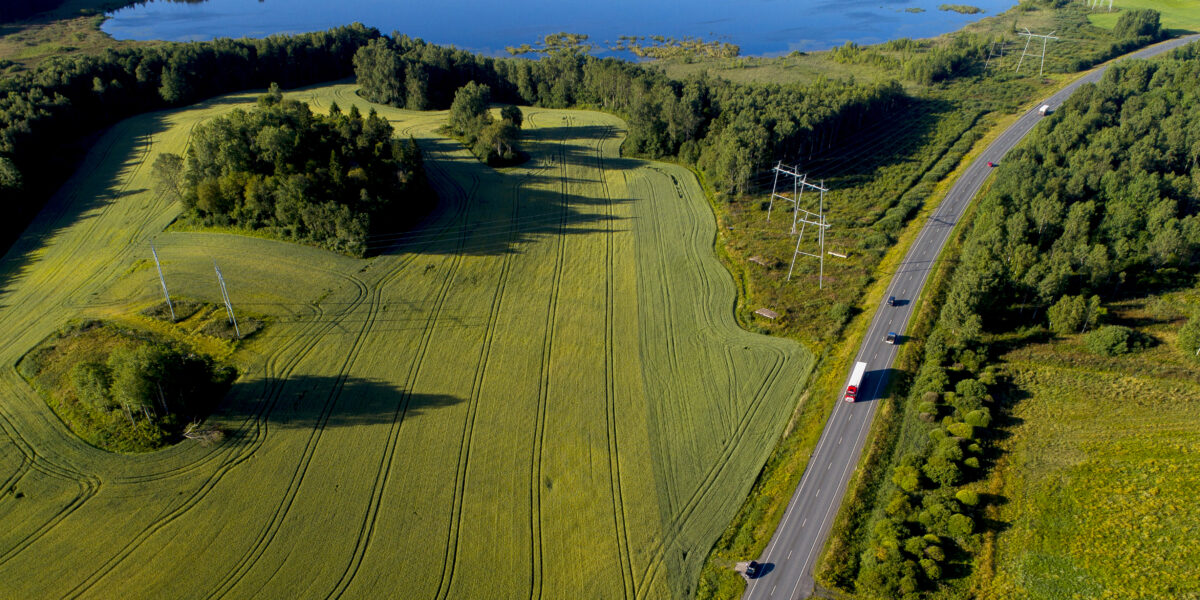The estimate is based on Statistics Finland’s verified figures for previous years and Fingrid’s real-time CO2 emission estimate. Fingrid estimates that the emission intensity will continue to decline in the coming years. The low emission intensity is one of the most adaptable criteria for renewable fuel production.
Finland has lucrative opportunities for investments that use green electricity, as significant amounts of new renewable generation are being built and the emissions from power generation, consisting of carbon dioxide (CO2), are on a strong downward trend.
Fingrid receives a lot of enquiries from new connection applicants who are planning investments in Finland. They are interested in the development of emission intensity and Fingrid’s calculation principles. We have comprehensively addressed our real-time CO2-estimate methodology on our website.
Statistics Finland also makes a similar assessment at the annual level. We work actively together to develop the calculation methods. This blog provides answers to the development outlook of the emission intensity of power generation and how the theme is an essential part of the regulation of renewable fuels.
The role of emissions in renewable fuel regulation
Renewable fuels can be roughly divided into biofuels and Renewable Fuel of Non-Biological Origin (RFNBO).
From the point of view of the power system, the more relevant fuel type is RFNBO, as its different forms require a lot of electricity to be generated.
As less than 90% of Finland’s power system’s supply comes from renewable sources, renewable electricity purchased from the price area must correspond to the amount of fuel production on a monthly basis in the 2020s and on an hourly basis from 2030 onwards for RFNBO production. When this timing condition is met, there are three alternative procedures for producing RFNBO products:
- Direct connection between renewable electricity generation and RFNBO production or location on the same plant area without the use of emission-intensive grid electricity (see procedure c) for fuel production,
- Additionality condition, i.e., only electricity from renewable power plants, that have started electricity production within 36 months, is purchased for RFNBO production, or
- Renewable electricity can be transferred through external grids, if the emission intensity of electricity in the price area has been verified to be below the threshold of 18 gCO2eq/MJ (= 65 gCO2eq/kWh)
Each of these procedures become more feasible as renewable power generation investments continue in Finland. Of these, the procedure based on the emission intensity of electricity in the price area allows the freest conditions for business, as it does not bind RFNBO production to a single electricity generation plant or power procurement to a limited group of new power plants. In practice, renewable electricity can be purchased freely from Finland. Once the annual emission intensity has declined below the threshold in one calendar year, for the subsequent five years the emission intensity is considered to remain below the threshold by default.
Significant decline in carbon dioxide emissions continues
For electricity, emission intensity is generally described using carbon dioxide emission factors. As can be seen in the figure below, CO2 emission factors have decreased considerably and, according to Fingrid’s forecast*, the decline will also continue in the future. To the great delight of many, Fingrid estimated that the emission intensity required in RFNBO regulation will be clearly below the threshold in 2023.

Statistics Finland’s verified statistics are published two years after each calendar year, so exact emission factor realisations are not yet available for 2023. Historical development shows that Fingrid’s estimates are very close to Statistics Finland’s figures on an annual level, so they can be used as indicative figures for the average emissions of the previous year.
More informative statistics through cooperation
Fingrid has developed emission calculations in cooperation with Statistics Finland on a long-term basis.
This spring, we improved the availability of data by adding annual averages of emissions from power generation verified by Statistics Finland to Fingrid’s website. Statistics Finland, for their part, have started publishing an annual average based on Fingrid’s calculations as preliminary estimate of the previous year’s emission factor.
The differences between Fingrid’s and Statistics Finland’s annual averages are explained by the latest possible, but inevitably outdated, source data used in Fingrid’s calculations. In practice, the emission factors for generation categories are based on two-year-old emission factors, which do not take into account the latest changes in the fuel shares of power plants.

There have been deviations between Fingrid’s and Statistics Finland’s annual averages in both directions, but the most important observation is still the general downward trend in emission factors due to a significant increase in new wind, solar and nuclear power.
The fall below the threshold is notable even with all greenhouse gases considered
It is noteworthy that the upper limit of the emission factor for electricity generation applied in the manufacturing of RFNBO products regards greenhouse gas emissions as carbon dioxide equivalents (CO2eq), whereas Fingrid’s and Statistics Finland’s estimates have previously included only direct CO2 emissions.
In spring 2024, Statistics Finland has published annual CO2 equivalent and life cycle emission factors for the first time, which enables verification of the fall below the threshold in the future. Below is a summary of the annual averages of the statistics in question and Fingrid’s emission factor estimates for power generation, as well as a forecast of future development based on their previous proportions. Thus, the emission intensity of electricity generation in Finland in 2023 is very likely to have fallen below the required limit for RFNBO products, regardless of how the emission intensity is calculated.
The final confirmation of the matter will be received with Statistics Finland’s statistics in spring 2025.

Renewable electric fuels, such as green hydrogen, are versatile and feasible investment targets in Finland, as a third criterion option for RFNBO production becomes possible with the decarbonization of electricity generation. This declining trend in the emission intensity of electricity generation will continue. Welcome to Finland to carry out the energy transition together!
Explanations:
* The forecast of the CO2 emission factor is based on market modelling results from the scenario used by Fingrid for grid planning, with the average of weather years, and the generation type-specific emission factors calculated using the Statistics Finland verified statistics of 2022. The generation type-specific emission factors have not been changed for future years in the calculations. It is likely that they will decrease as the fuels of power generation become cleaner in Finland. Although there is no certainty about the development, the emission factor figures in the forecast are undoubtedly at the high end, if the emission intensity of fuel-based electricity generation continues to decline. The CO2 equivalent and life cycle emission factor forecasts have been approximated based on the historical average difference between the statistics of Statistics Finland and Fingrid’s CO2 emission factor estimates.






